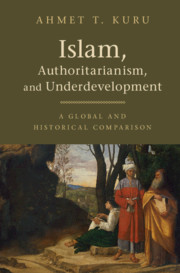Bibliography
Published online by Cambridge University Press: 18 June 2019
- Type
- Chapter
- Information
- Islam, Authoritarianism, and UnderdevelopmentA Global and Historical Comparison, pp. 237 - 292Publisher: Cambridge University PressPrint publication year: 2019

